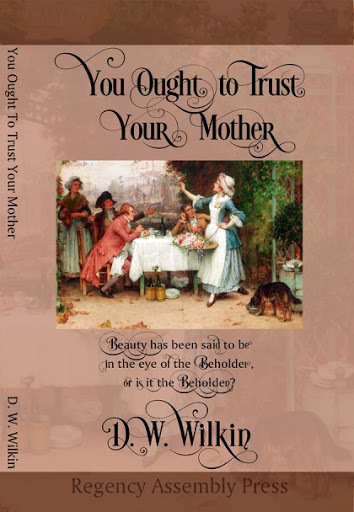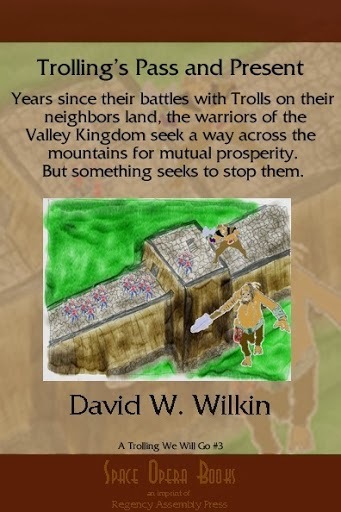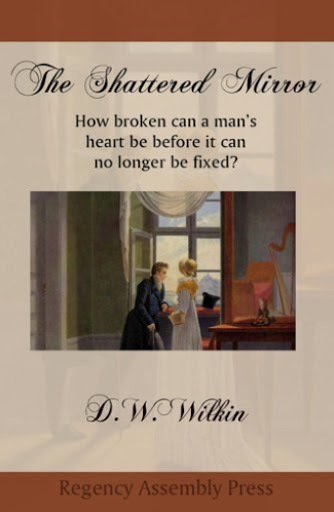D.W. Wilkin's Blog, page 37
July 31, 2016
You Ought to Trust Your Mother (YOTTYM) now released
Now available the next Regency Romance tale by D.W. Wilkin:
Beauty has been said to be in the eye of the Beholder, or is it the Beholden.
The tale of Baron Fallion Lancelot Stafford, a gentleman of perhaps too much leisure who has served in the wars of some few years before. He now has decided that all this leisure is perhaps a waste and he should be doing something. He was just very unsure what that was.
We also find Lady Beatrice Cavendish, the daughter of the Earl of Hoare who is famed for her beauty, yet cannot find any man who has more to speak to her beyond that one subject. And yet far too many think they should offer for her with only the ardent praise to her looks to recommend them. Perhaps there exists one suitor who could speak on a subject beyond that?
In the rush of the Season of 1821, where their most intimate friends have all come to the conclusion that they should marry, can Beatrice put aside her willful ways and hear sound thoughts that her mama has said on that particular subject? Beatrice was sure that her mother would be content if she accepted the Baron Tweedglen, or any of a dozen other men of good breeding, position, or wealth. Whether they had ought to speak on her attractiveness, and no other words would leave their mouths.
Certainly a marriage with such foundations was doomed to crumble once age advanced and liver spots or wrinkles appeared. Yet amongst the Ton, such marriages were often deemed successes. Would they be so for Beatrice, though? That was something she was destined to apply her own thoughts to.
For Baron Tweedglen, the haunting memory of the war caused him to avoid any reference to his time spent prosecuting that undertaking. Such deamons as consumed his psyche, were magnified as his desire was for a world that art flourished and certainly his experience had been the exact opposite of such an inclination. The Baron was desperately in need of something that could save him from his own self. Was there a remedy in marriage as the entire Ton seemed to believe?
Now available on Amazon for $15.99…
also available for your Kindle and Kindle Reading Apps for $3.99
for those who have iPads, Nooks, or other devices, the book is also available at:
The Apple iBookstore, Barnes and Noble Nook store, Kobo, and Smashwords for $3.99 as well.


July 30, 2016
Regency Personalities Series-James Harvey D’Egville
Regency Personalities Series
In my attempts to provide us with the details of the Regency, today I continue with one of the many period notables.
James Harvey D’Egville
1770 – 1836
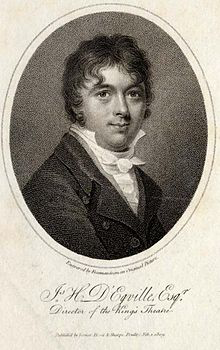
James Harvey D’Egville
James Harvey D’Egville was an English dancer and choreographer.
James’ father Pierre D’Egville was ballet master at Drury Lane and Sadler’s Wells Theatres. His other son George D’Egville was also a dancer.
James D’Egville performed at the Paris Opera from 1784 to 1785.
Back in England, in June 1786, he danced in The Nosegay at the Haymarket Theatre with Maria Theresa Kemble in the presence of the Royal Family. On 7 July he appeared in a ballet entitled Jamie’s Return with Kemble and his brother George. It was well received which inspired an artist named Miller to do a painting depicting the three of them.
Between 1799 and 1809 he was choreographer at the King’s Theatre, now Her Majesty’s Theatre where he had danced as a child in 1783. One of his pupils was Mary Ann Dyke who became tragedienne Mary Ann Duff.
In 1827, the London Magazine published an article decrying the fact that D’Egville had won a libel suit against The Spirit of the Age newspaper for writing about his alleged association with the assassin of Princess Lambelle while he was in France in 1792. It annoyed the magazine immensely that simply writing that someone had said something libellous was grounds to win damages against a periodical. The magazine also had snide things to say about D’Egville’s ballets. They wrote of him, “the gentleman who deserves the thanks of all the saints on earth, for having cured the young men of the present day of the sinful taste for ballets.”


Space Opera Books Presents Trolling, Trolling, Trolling Fly Hides
Trolling, Trolling, Trolling Fly Hides!
Not only do I write Regency and Romance, but I also have delved into Fantasy.
The Trolling series, (the first three are in print) is the story of a man, Humphrey. We meet him as he has left youth and become a man with a man’s responsibilities.
We follow him in a series of stories that encompass the stages of life. We see him when he starts his family, when he has older sons and the father son dynamic is tested.
We see him when his children begin to marry and have children, and at the end of his life when those he has loved, and those who were his friends proceed him over the threshold into death. All this while he serves a kingdom troubled by monsters.
Troubles that he and his friends will learn to deal with and rectify.
It is now available in a variety of formats. For $2.99 you can get this fantasy adventure.
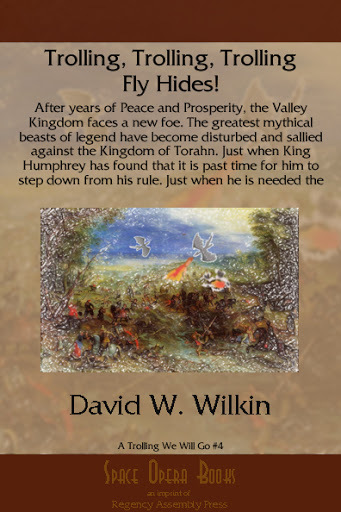
Barnes and Noble for your Nook
Old age is catching up to Humphrey and his friends. He feels it in his bones and with his son and heir having reached the prime of his life, it could very well be time to pass the baton of rule to Daniel.With the Valley Kingdom of Torahn at Peace, that would not be a terrible thing to do. Though breaking his decision to his wife Gwendolyn, the Queen, might be the hardest battle that he ever would fight.
Even as the life of retirement looks to be attractive and possible, however, the Valley Kingdom is beset again. Not Goblins, Trolls, Giants or Men, this time. No. That Humphrey knew would be far too easy.
Those obstacles had been overcome before and the problems they presented had solutions that the army of Torahn was trained to deal with. No, of all the creatures that came forth from Teantellen that they had beaten, the one they had never faced now came forth. Dragons!
Who in the realm knew how to fight these mythical beasts? Was there even away to do so?
Now Humphrey who had thought to spend the remainder of his days quietly writing his memoirs and drinking, was faced with the greatest challenge he had ever known.
Feedback
If you have any commentary, thoughts, ideas about the book (especially if you buy it, read it and like it
July 29, 2016
Regency Personalities Series-Philharmonic Society of London
Regency Personalities Series
In my attempts to provide us with the details of the Regency, today I continue with one of the many period notables.
Philharmonic Society of London
6 February 1813-
Philharmonic Society of London was formed at a time when there were no permanent London orchestras, nor organised series of chamber music concerts, by a group of thiry music professionals. The idea was that by cooperating, they could build a stronger orchestra than by competing against one another. However, given the organization’s choice to hold its concerts at the Argyll Rooms, it is likely that the society was initiated because of John Nash’s bold urban redesign of Regent Street. In this way, the society would gain an impressive performing space once the old Argyll Rooms had to be rebuilt due to the Regent Street plan, and Prince Regent George IV could promote classical music as a British institution and thereby improved his reputation. Concerts were held in the Argyll Rooms until it burned down in 1830.
The Society’s aim was “to promote the performance, in the most perfect manner possible of the best and most approved instrumental music”. The first concert, on 8 March 1813, was presided over by Johann Peter Salomon, with Muzio Clementi at the piano and the violin prodigy Nicolas Mori as lead violinist, performing symphonies by Joseph Haydn and Ludwig van Beethoven. Among the founders were the pianist and violinist William Dance (who became the society’s first director and treasurer until his death in 1840), composer Henry Bishop, and Charles Neate, a pianist and friend of Beethoven, who publicised Beethoven’s music at the Society.
The Society asked Beethoven to come to London, but the composer’s health prevented his accepting the invitation. However the society’s request for a new symphony from him resulted in the Choral Symphony. In 1827 Beethoven wrote to the society outlining his straitened circumstances; at a special general meeting the society resolved to send the composer £100 immediately.
Other works written for the Society include the Italian Symphony by Felix Mendelssohn. The Italian Symphony was finished in Berlin on 13 March 1833, in response to an invitation for a symphony. He conducted the first performance himself in London on 13 May 1833 at a London Philharmonic Society concert. The symphony’s success, and Mendelssohn’s popularity, influenced the course of British music for the rest of the century.
From 1830 to 1869, the Society gave its concerts in the concert-hall of Hanover Square Rooms, which had seating for only about 800.


An Unofficial Guide to how to win the Scenarios of Wild the 2nd Expansion for Rollercoaster Tycoon 3
An Unofficial Guide to how to win the Scenarios of Wild
I have been a fan of this series of computer games since early in its release of the very first game. That game was done by one programmer, Chris Sawyer, and it was the first I recall of an internet hit. Websites were put up in dedication to this game where people showed off their creations, based on real amusement parks. These sites were funded by individuals, an expense that was not necessarily as cheap then as it is now. Nor as easy to program then as it might be to build a web page now.
Prima Books released game guides for each iteration of the game, Rollercoaster Tycoon 1, Rollercoaster Tycoon 2 and Rollercoaster Tycoon 3 (RCT3) but not for the expansion sets. And unlike the first two works, the third guide was riddle with incorrect solutions. As I played the game that frustrated me. And I took to the forums that Atari, the game publisher hosted to see if I could find a way to solve those scenarios that the Prima Guide had written up in error. Not finding any good advice, I created my own for the scenarios that the “Official” Guide had gotten wrong.
Solutions that if you followed my advice you would win the scenario and move on. But if you followed the “Official” version you would fail and not be able to complete the game. My style and format being different than the folks at Prima, I continued for all the Scenarios that they had gotten right as well, though my solutions cut to the chase and got you to the winner’s circle more quickly, more directly.
My contributions to the “Official” Forum, got me a place as a playtester for both expansions to the game, Soaked and Wild. And for each of these games, I wrote the guides during the play testing phase so all the play testers could solve the scenarios, and then once again after the official release to make changes in the formula in case our aiding to perfect the game had changed matters. For this, Atari and Frontier (the actual programmers of the game) placed me within the game itself.
And for the longest time, these have been free at the “Official” Forums, as well as my own website dedicated to the game. But a short time ago, I noticed that Atari, after one of its bankruptcies had deleted their forums. So now I am releasing the Guide for one and all. I have added new material and it is near 100 pages, just for the first of the three games. It is available for the Kindle at present for $2.99.
(Click on the picture to purchase)
Not only are all 12 Scenarios covered, but there are sections covering every Cheat Code, Custom Scenery, the famous Small Park Competition, the Advanced Fireworks Editor, the Flying Camera Route Editor which are all the techniques every amusement park designer needs to make a fantastic park in Rollercoaster Tycoon 3.
Scenarios for WILD!
1) Scrub Gardens
2) Ostrich Farms Plains
3) Egyptian Sand Dance
4) A Rollercoaster Odyssey
5) Zoo Rescue
6) Mine Mountain
7) Insect World
8) Rocky Coasters
9) Lost Land of the Dinosaurs
10) Tiger Forest
11) Raiders of the Lost Coaster
12) Saxon Farms


July 28, 2016
Regency Personalities Series-William Porden
Regency Personalities Series
In my attempts to provide us with the details of the Regency, today I continue with one of the many period notables.
William Porden
1755 – 1822
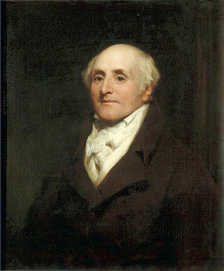
William Porden
William Porden was born in Kingston upon Hull, he trained under James Wyatt and Samuel Pepys Cockerell.
In 1784, the year of his marriage to Mary Plowman, Porden was appointed estate surveyor by the 1st Earl Grosvenor. This position involved assessing buildings on the Grosvenor Estate in Mayfair and determining the “fine” which an occupier had to pay when his lease fell in, and the revised ground rent. More than twenty years later Porden was appointed to reconstruct the Grosvenors’ country seat, Eaton Hall in Cheshire. This project was carried out in a Gothic revival style.
From 1804–08 he designed the stables, riding house and tennis court at the Brighton Pavilion for the Prince of Wales. The riding school was in the “Indo-Saracenic” style, inspired by pictures of Indian buildings. The main building was a notable technical accomplishment for the time, being circular and domed, with a diameter of 24 metres (79 ft) and a height of 19 metres (62 ft). It survives and is now a concert hall called “The Dome”. Also in 1804, he designed Steine House for Maria Fitzherbert, the Prince’s wife.
Porden was also a garden architect and furniture designer and he was involved in the development of housing on the Phillimore Estate in Holland Park, London.
In 1785, William and Mary Porden had twin daughters, Mary Hannah (who died at the age of two years) and Sarah Henrietta. A son, William, born in 1793, also died at the age of two. The youngest child, the poet Eleanor (born in 1795), became the first wife of John Franklin, Arctic explorer and later Governor of Tasmania, but she died before reaching thirty.


Fantasy from Space Opera Books, Trolling’s Pass and Present
Trolling’s Pass and Present
Not only do I write Regency and Romance, but I also have delved into Fantasy. The Trolling series, (the first three are in print) is the story of a man, Humphrey.
We meet him as he has left youth and become a man with a man’s responsibilities. We follow him in a series of stories that encompass the stages of life.
We see him when he starts his family, when he has older sons and the father son dynamic is tested. We see him when his children begin to marry and have children, and at the end of his life when those he has loved, and those who were his friends proceed him over the threshold into death.
All this while he serves a kingdom troubled by monsters. Troubles that he and his friends will learn to deal with and rectify.
It is now available in a variety of formats. For $2.99 you can get this fantasy adventure.
Barnes and Noble for your Nook
Years since their battles with the Trolls, even on foreign soil, the warriors of the Valley Kingdom of Torahn need something to keep their edge honed.
The economy too is beginning to fray a little without the great wars to support. The Leaders hit upon the idea of searching for a path to reach the east side of the continent.
The Elves swear that at one time their writings tell of such, the Dwarves swear such a pass across Teantellen is legendary. Teantellen though is filled with races man has never gotten along with well. Goblins, Dark Elves, Trolls, Giants and Dragons.
It has been years since the mountain tops exploded, and perhaps that has changed things enough that a way can be found to link the western lands with the eastern lands and increase trade, and prosperity for all. Even should they fail in their quest, as the history of man has shown to this point in time, the attempt will do much to spur the economy.
Tens of thousands of gold will be spent by the Council of Twenty-One to pay for such an expedition. Gold that those who are not so scrupulous might choose to pocket as they tried in the Troll Wars.
With such shenanigans taking place again, are the hopes of the previous generation, the leaders from the Troll Wars now in retirement, ready to be achieved? Is it time for Torahn, called the Valley Kingdom, but the only Kingdom without a King, to have a King once more?
Feedback
If you have any commentary, thoughts, ideas about the book (especially if you buy it, read it and like it
July 27, 2016
Regency Personalities Series-Henrietta Antonia Clive Countess of Powis
Regency Personalities Series
In my attempts to provide us with the details of the Regency, today I continue with one of the many period notables.
Henrietta Antonia Clive Countess of Powis
3 September 1758 – 3 June 1830
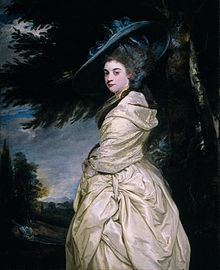
Henrietta Antonia Clive
Henrietta Antonia Clive Countess of Powis was born in Oakley Park, at Bromfield, Shropshire, into a landed and titled family, she was the daughter of Henry Herbert, 1st Earl of Powis, and Barbara, granddaughter of William Herbert, 2nd Marquess of Powis. Her family owned a property in London and significant estates in Wales and Shropshire. Her birthplace was sold to Robert Clive, 1st Baron Clive, in 1771, so Lady Henrietta spent her teenage years at the family’s ancestral home, Powis Castle.
Lady Henrietta married Lord Clive’s eldest son and heir, Edward Clive, 1st Baron Clive, in 1784. The marriage was beneficial to both families; the bride’s family had a prestigious name but considerable debts, while the groom accrued wealth built during Clive’s military campaigns in India. The couple settled in Walcot Hall, at Lydbury North near Bishop’s Castle, Shropshire. Their four children were:
Lady Henrietta Antonia Williams-Wynn (d. 1835), wife of Sir Watkins Williams-Wynn, 5th Baronet
Edward Herbert (1785–1848), 2nd Earl of Powis
Lady Charlotte Florentia Percy (1787–1866), wife of Hugh Percy, 3rd Duke of Northumberland, and governess of the future Queen Victoria
Robert Henry Clive (1798–1854), a politician
Lady Clive inherited the Herbert estates upon the death of her brother, George Herbert, 2nd Earl of Powis, in 1801, when the Earldom became extinct. Three years later, it was recreated in favour of her husband, making her Countess of Powis.
The Countess of Powis died at Walcot Hall in 1830 aged 71 and was buried at Bromfield Parish Church, near Oakley Park. Her husband survived her, dying in 1839.
In 1798, Lord Clive was appointed Governor of Madras. Lady Clive followed him to India where she started collecting rocks and minerals, as the first aristocratic woman to pursue that hobby. As her collection was growing, Lady Clive contacted prominent collectors and mineral dealers, such as James Sowerby, John MacCulloch and the Countess of Aylesford. Her records show that many specimens had been given to her by her children. The minerals in Lady Clive’s collection, numbering up to 1,000, are arranged systematically by chemistry, as was usual in the early 19th century. In 1817, she organised her collection in two handwritten catalogues, using numbers to identify each specimen and helping the collection remain remarkably complete to this day. A quarter of the original collection is now kept at the National Museum Wales as one of the most important historic mineral collections, having been donated by her great-grandson, George Herbert, 4th Earl of Powis, in 1929.
Upon arriving in India, Lady Powis also created a garden and kept a record of the plants in the area of Mysore and the Carnatic region.


RAP has The Shattered Mirror, A Regency Romance
The Shattered Mirror
For your enjoyment, one of the Regency Romances I published. It is available for sale and now at a reduced price of $3.99, and I hope that you will take the opportunity to order your copy.
Order for yourself or as a gift. It is now available in a variety of formats. For just a few dollars this Regency Romance can be yours for your eReaders or physically in Trade Paperback.
Barnes and Noble for your Nook
and in Trade Paperback
Bridget Halifax-Stokes was giddy with the excitement of her Season in London. Town had beckoned and her Season came on the heels of the end of the war against the tyrant. All the handsome men were returning heroes. What better year to come out?
Her father thought it all nonsense. Her mother believed that it would be the best showing of any of her daughters. More lords now available and the family’s luck that Bridget was just the perfect age.
All is fun and frivolity for Bridget until she literally crashes into Sir Patrick Hampton as he limps along the High Street. A man she knew once well from her childhood, now a stranger with dark and foreboding eyes. Eyes that had seen more than any man’s share of the war.
Feedback
If you have any commentary, thoughts, ideas about the book (especially if you buy it, read it and like it
July 26, 2016
Regency Personalities Series-Joseph Wright of Derby
Regency Personalities Series
In my attempts to provide us with the details of the Regency, today I continue with one of the many period notables.
Joseph Wright of Derby
3 September 1734 – 29 August 1797
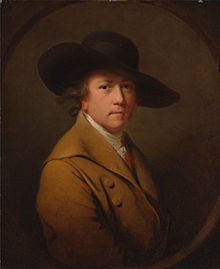
Joseph Wright
Joseph Wright of Derby was born in Irongate, Derby. Deciding to become a painter, Wright went to London in 1751 and for two years studied under Thomas Hudson, the master of Joshua Reynolds. After painting portraits for a while at Derby, Wright again worked as an assistant to Hudson for fifteen months. In 1753 he returned to and settled in Derby and varied his work in portraiture by the production of the subjects with strong chiaroscuro under artificial light, with which his name is chiefly associated, and by landscape painting. Wright also spent a productive period in Liverpool, from 1768 to 1771, painting portraits. These included pictures of a number of prominent citizens and their families.
Wright married Ann (also known as Hannah) Swift, the daughter of a leadminer, on 28 July 1773
Wright and his wife had six children, three of whom died in infancy. Wright set off in 1773 with John Downman, a pregnant Ann Wright and Richard Hurleston for Italy. Their ship took shelter for three weeks in Nice before they completed their outward voyage in Livorno in Italy in February 1774. Downman returned to Britain in 1775. Although he spent a great deal of time in Naples, Wright never actually witnessed any eruption of Mount Vesuvius; however, it is possible that he witnessed smaller, less impressive eruptions, which may have inspired many of his subsequent paintings of the volcano. On his return from Italy he established himself at Bath as a portrait-painter, but meeting with little encouragement he returned to Derby in 1777, where he spent the rest of his life. He became increasingly asthmatic and nervous about the house, and for these complaints he was treated by his friend Erasmus Darwin. Ann Wright died on 17 August 1790. On 29 August 1797 Wright died at his new home at No. 28 Queen Street, Derby, where he had spent his final months with his two daughters.
Wright was a frequent contributor to the exhibitions of the Society of Artists, and to those of the Royal Academy, of which he was elected an associate in 1781 and a full member in 1784. He, however, declined the latter honour on account of a slight which he believed that he had received, and severed his official connection with the Academy, though he continued to contribute to the exhibitions from 1783 until 1794.
Wright is seen at his best in his candlelit subjects of which the Three Persons Viewing the Gladiator by Candlelight (1765), his A Philosopher Lecturing on the Orrery (1766), in the Derby Museum and Art Gallery, and An Experiment on a Bird in the Air Pump (1768), in the National Gallery are excellent examples. His Old Man and Death (1774) is also a striking and individual production.
Joseph Wright of Derby also painted Dovedale by Moonlight, capturing the rural landscape of a narrow valley called Dovedale, 14 miles northeast of Wright’s home town of Derby, at night with a full moon. It hangs in the Allen Memorial Art Museum at Oberlin College. Its companion piece, Dovedale by Sunlight (circa 1784–1785) captures the colors of day. In another Moonlight Landscape, in the John and Mable Ringling Museum of Art, Sarasota Florida, equally dramatic, the moon is obscured by an arched bridge over water, but illuminates the scene, making the water sparkle in contrast to the dusky landscape. Another memorable image from his tour of the Lake District is Rydal Waterfall of 1795.
Cave at evening (above) is painted with the same dramatic chiaroscuro for which Joseph Wright is noted. The painting was executed during 1774, while he was staying in Italy. Notice the similarities to the Museum of Fine Arts, Boston’s holding, Grotto by the Seaside in the Kingdom of Naples with Banditti, Sunset (1778).
Wright had close contact with the pioneering industrialists of the Midlands. Two of his most important patrons were Josiah Wedgwood, credited with the industrialization of the manufacture of pottery, and Richard Arkwright, regarded as the creator of the factory system in the cotton industry. One of Wright’s students, William Tate, was uncle to the eccentric gentleman tunneler Joseph Williamson and completed some of Wright’s works after his death. Wright also had connections with Erasmus Darwin and other members of the Lunar Society, which brought together leading industrialists, scientists, and philosophers. Although meetings were held in Birmingham, Erasmus Darwin, grandfather of Charles Darwin, lived in Derby, and some of the paintings by Joseph Wright of Derby, which are themselves notable for their use of brilliant light on shade, are of, or were inspired by Lunar Society gatherings.
An Experiment on a Bird in the Air Pump (1768), shows people gathered round observing an early experiment into the nature of air and its ability to support life.
The Alchemist in Search of the Philosopher’s Stone (1771) depicts the discovery of the element phosphorus by German alchemist Hennig Brand in 1669. A flask in which a large quantity of urine has been boiled down is seen bursting into light as the phosphorus, which is abundant in urine, ignites spontaneously in air.
A Philosopher Lecturing on the Orrery shows an early mechanism for demonstrating the movement of the planets around the sun. The Scottish scientist James Ferguson (1710–1776) undertook a series of lectures in Derby in July 1762 based on his book Lectures on Select Subjects in Mechanics, Hydrostatics, Pneumatics, Optics &c. (1760). To illustrate his lectures, Ferguson used various machines, models and instruments. Wright possibly attended these talks, especially as tickets were available from John Whitehurst, Wright’s close neighbour, a clockmaker and a scientist. Wright could also have drawn on Whitehurst’s practical knowledge to learn more about the orrery and its operation.
These factual paintings are considered to have metaphorical meaning too, the bursting into light of the phosphorus in front of a praying figure signifying the problematic transition from faith to scientific understanding and enlightenment, and the various expressions on the figures around the bird in the air pump indicating concern over the possible inhumanity of the coming age of science.
These paintings represent a high point in scientific enquiry which began undermining the power of religion in Western societies. Some ten years later, scientists would find themselves persecuted in the backlash to the French Revolution of 1789, itself the culmination of enlightenment thinking. Joseph Priestley, a member of the Lunar Society, left Britain in 1794 after his Birmingham laboratory was smashed and his house burned down by a mob objecting to his outspoken support for the French Revolution. In France, the chemist Antoine Lavoisier was executed by the guillotine at the height of the Terror. The politician and philosopher Edmund Burke, in his famous Reflections on the Revolution in France (1790), tied natural philosophers, and specifically Priestley, to the French Revolution; he later wrote in his Letter to a Noble Lord (1796) that radicals who supported science in Britain “considered man in their experiments no more than they do mice in an air pump”.
In light of this comment, Wright’s painting of the bird in the air pump, completed over twenty years earlier, seems particularly prescient.
It was against this background that Charles Darwin, grandson of the Derby man and Lunar Society member, Erasmus Darwin, would add to the conflict between science and religious belief half a century later, with the publication of his book The Origin of Species in 1859.
Wright’s birthplace at 28 Irongate, Derby is commemorated with a representation of an orrery on the pavement nearby.
Joseph Wright was buried in the grounds of St Alkmund’s Church, Derby. The church was controversially demolished in 1968 to make way for a major new section of the inner ring road cutting through the town centre, and now lies beneath the road. Wright’s remains were removed to Nottingham Road Cemetery.




